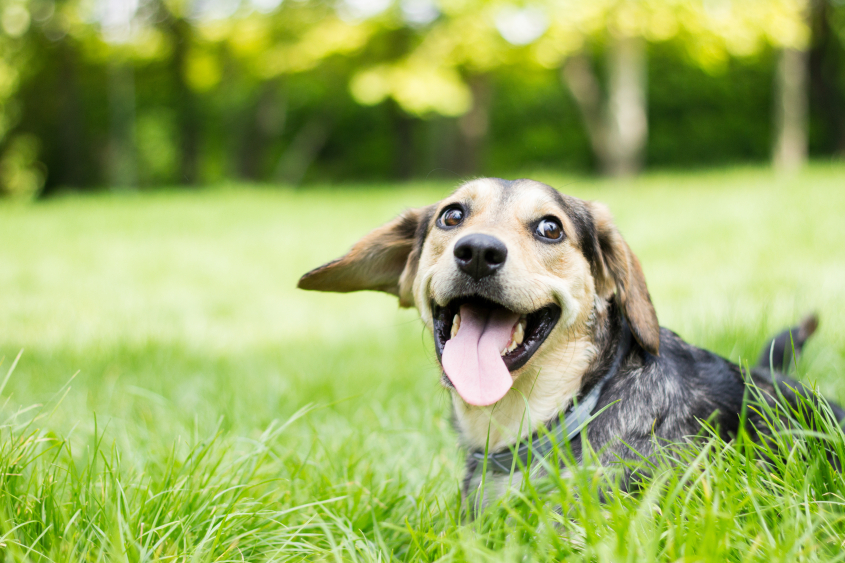Cannabis (THC) intoxication in dogs
Overview
Cannabis, or marijuana, exposure in dogs is becoming more common as cannabis products become more accessible with the legalization of cannabis in many states for both medical and recreational use. Dogs are much more sensitive to the effects of cannabis than humans and are often unintentionally exposed to high concentrations, particularly via edibles that smell and taste like candy or baked goods, which may also contain other hazardous ingredients to dogs like chocolate, xylitol, or high-fat butter/oils. While cannabis ingestion can often cause significant clinical signs, most dogs recover well within one to two days with appropriate care.
Cause
Cannabis is derived from the Cannabis plant and contains many different components known as cannabinoids. The two most commonly referred to are THC (delta-9-tetrahydrocannabinol), which is psychoactive and the primary toxic component for dogs, and CBD (cannabidiol), which is non-psychoactive.
Intoxication from cannabis in dogs typically follows ingestion of THC-containing products. Second-hand smoke (inhalation) can also produce mild signs. Exposure may also occur if a dog ingests human feces from a person who had THC in their system, which can occur during hiking or camping trips. Dogs are more sensitive than humans to THC effects because they have a higher density of cannabinoid receptors in their brains. The concentration of THC varies greatly between products. Some concentrates and oils may contain dramatically higher THC levels than plant material, while synthetic forms (e.g., vape cartridges) often have very high potency, increasing the risk of severe intoxication.
Diagnosis
Diagnosis is primarily based on history, clinical signs and physical examination. Providing your veterinarian with detailed information, if known, is helpful for diagnosing and guiding treatment, including the type of product (plant material, edible, concentrate, etc.), the amount ingested and the timing of exposure.
If packaging was used for the product, it is especially helpful to identify other toxic ingredients (e.g., chocolate, xylitol), and to estimate the THC concentration.
While human urine drug-screening tests are commercially available, they are not reliable in dogs and frequently yield false-negative results.
Clinical Signs
Clinical signs in dogs can start within 30 minutes to several hours post-exposure and may persist up to 72 hours. Common signs include:
- Incoordination or difficulty walking
- Lethargy or sedation
- Dazed or disoriented expression
- Urinary dribbling or incontinence
- Increased sensitivity to sound or touch
- Dilated pupils or glassy eyes
- Vomiting or drooling
Other signs may include agitation, vocalization, altered heart rate or blood pressure, difficulty regulating body temperature, tremors, or in severe cases, seizures or coma.
Treatment
Since there is no antidote for THC intoxication, treatment focuses on supportive care and managing clinical signs, depending on the severity. Because the sedating effects of THC can set in quickly, dogs that are already showing clinical signs should not be induced to vomit or given activated charcoal due to the risk of aspirating.
Treatment primarily involves IV (intravenous) fluids and other supportive medications to help manage clinical signs and close monitoring. For milder exposures, your veterinarian may recommend monitoring at home until they have fully recovered, with them confined to a safe, quiet area away from stairs and other hazards.
For more severe exposures, intravenous lipid emulsion (ILE) therapy may be recommended to help the body remove fat-soluble toxins, like THC, more rapidly. Severely affected cases may require more intensive care, including breathing support with a ventilator, and medications to prevent seizures.
Prognosis
The prognosis is generally very good with appropriate care. Most dogs recover fully in one to two days, though more severe exposure can extend recovery to three days. Extremely high-dose ingestion is rarely fatal but has been reported in some cases.
Prevention
- Store all cannabis products securely out of reach of pets
- Never leave edibles (cookies, gummies, brownies) in accessible areas
- Limit second-hand smoke by avoiding smoking around pets
- Remind guests to secure their personal belongings
- Supervise your dog closely on walks to prevent accidental ingestion of discarded cannabis remnants in public areas
This page was last updated on Monday, Dec 22, 2025



